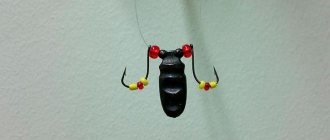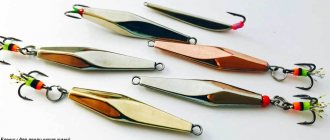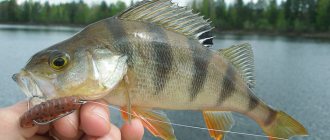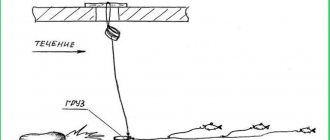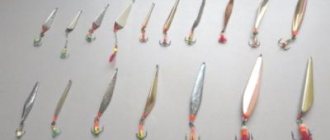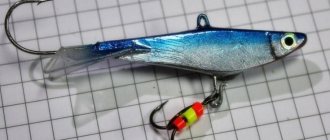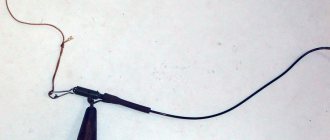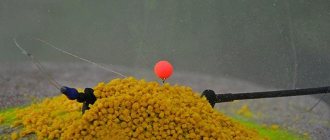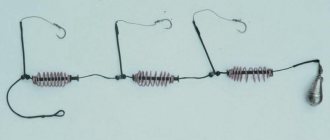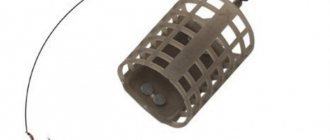Perch can be easily caught using a variety of gear, which includes traditional float rods, donks, and spinning rods. This fish is not picky, so it bites on different baits. One of the most popular gear designed for catching perch is the so-called garland.
It has proven itself well in catching predatory fish that hunt in schools. These include not only perch, but also rudd.
It shows its positive qualities best in bodies of water with stagnant water or with a very weak current. The bottom of the reservoir should be smooth and free from a large amount of grass . It is these open areas that are most popular among schools of perch. This is where the garland shines best.
This gear consists of several hooks or baits made of silicone. Thanks to this approach, you can pull out several fish at once in one cast. The tackle is well suited for both winter and summer fishing.
Basics
For such tackle, the following jigs are most often used: uralki, devils and ants. Perch swallow best bait that is colored black, green, solid or with a yellow belly.
Experienced fishermen make a garland for each specific place. Jigs equipped with a hook number 13-18 are considered universal baits .
When it was possible to decide on the number of baits on the gear, they begin to choose a nod. In this case, it is best to take a flat product made of metal. A jig is attached to its end and checked that with a working length of about 10-15 cm, the nod begins to bend by approximately 15 degrees.
A nod that is too hard or too soft does not contribute to the high-quality play of the tackle and will make its sensitivity rather weak. Almost any fishing rod is suitable for such gear - the fisherman selects this part individually, strictly for himself. It is best if he has a whip, the length of which will be in the range of 10-20 cm.
As a rule, the so-called white fish, whose weight does not exceed 1 kg, bite on the garland, so there is no point in taking a fishing line whose diameter will be more than 0.15 mm. If it is known that there are larger fish in the reservoir, it is better to take a thicker fishing line.
In this case, you will need to take into account that an overly thick fishing line will scare away the fish, it will be more susceptible to the influence of the current, and the bait will play much worse.
If the depth of the reservoir is about 8 meters, then you can wind about 20 meters of fishing line on the reel. For depths greater than 10 meters, take at least 50 meters. By the way, pike perch and pike bite quite well on the garland, which follow the perch, eating the fish that lag behind the school.
It’s quite easy to pull out pike perch, but pike can cut off the tackle, so it’s best to have a spare one with you.
DIY path for perch made from silicone baits
The most favorable time for active bites is April and May. The predator hunts only during daylight hours. Perch can bite during the day, but the most successful fishing happens at dawn. You can get some good fish at the end of summer, when minke whales begin to hunt for grown-up fry.
The small predator eats crustaceans, caviar, bloodworms, and smaller fellows. Worms, caddis flies, maggots, leeches, as well as fish eyes and even fish entrails are used as bait. But using plant baits is useless; stripers ignore them, as we wrote about in the article “Jig fishing for perch in a pond.”
As for its habitats, it is not difficult to find oysters among aquatic vegetation, reed thickets, and water lilies. From snags, it goes out into shallow water in search of fry. You can often see a school of perch chasing small fish, which splash in different directions, flying out of the water. The whitebait attracts gulls, by the concentration of which it is easy to determine the predator’s hunting areas.
Catching perch with a garland
When fishing for perch, anglers almost always use wobblers and spoons, but completely ignore silicones. And it’s completely in vain; with their help, small minke whales are caught quite successfully. Of all the different forms of rubber bands, rippers and twisters are considered the most catchy.
They are often used in conjunction with jig heads, but the track shows excellent results. In this case, you will need a piece of line 60-70 cm long, no more, otherwise it will be difficult to cast. A carabiner with a swivel is mounted at one end, and a load is tied at the other.
Along the entire length of the line, leashes 5-8 cm long are tied at an equal distance from each other. You should not increase the length of the leashes, otherwise they will begin to wrap around the central line. As for the weight of the lead sinker, it is selected based on the test performance of the fishing rod.
The result is a path for catching perch with your own hands. The size of the twisters used depends on the size of the intended prey. Fishing begins with small baits, no more than two centimeters, gradually increasing the size depending on the situation.
It is possible to determine the color of the bait only on a pond, selecting it experimentally. In order not to miss the mark with color, the fisherman must have a sufficient assortment of different colors. If you follow the established rule, then muddy water or twilight require bright colors and vice versa. In this case, the colors should be as close as possible to the objects living in the reservoir.
However, there are exceptions to the rules, for example, minke whales constantly attack completely unnatural colors. So, a predator may like the blue or poisonous green color of rubber. It is allowed to mount several baits of various colors on one track.
How to knit a garland?
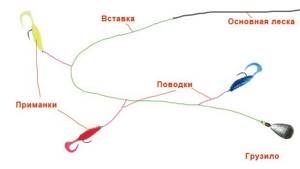
Tying one jig to the tackle is not difficult: just pass the fishing line through the appropriate hole, make a loop on the hook and carefully tighten the knot.
Many fishermen also make a garland using this technology, but for the upper jigs they add one important point: the free end of the fishing line on these baits is passed one more time through the hole of the jig and tied again.
The main disadvantages of this method are the presence of a large number of knots and pieces of fishing line that will scare away fish. This problem can be solved quite simply: the upper jigs are attached to the tackle without any knots at all.
For example, if there is a need to make a garland, the length of which will be about three meters, for this you will have to unwind a little more than three meters from the reel; the jig is threaded through the entire unwound fishing line, without first securing it.
After this, wrap the fishing line three times around the ring of the jig and pass it into the hole of the bait. It will hold very securely, and the bait will not move on the line, even if a very serious load is applied to it. All subsequent jigs are attached every half a meter.
The last nozzle is attached using conventional technology.
In most cases, the same type of jigs with the same mass are combined in a garland. However, it is better to have several attachments of a different type on hand. If a fisherman is just starting to use this tackle, then it is best to make it up of jigs of various weights. This greatly simplifies the search for the required depth.
A distance of 40 to 60 cm is always maintained between jigs.
Garland equipment
As mentioned earlier, jigs such as uralochka, devil or ant are used as bait. However, experienced fishermen also hang other models depending on the reservoir. A universal bait is considered to be a small bait, the diameter of which should be 2 mm , it should have a hook number 16.
The ideal nod would be a metal product that can be adjusted in length if necessary. It is desirable that with the help of this gear the game and sensitivity of the entire system will be most noticeable. A nod that is too soft or too hard does not allow you to achieve this effect.
Almost any fishing rod is suitable for a garland, and its length should be no more than 20 cm. As a rule, quite large fish are not caught with such tackle, so it is enough to take a fishing line whose diameter will not exceed 0.15 mm.
Due to the fact that pike often bite on such gear, in most cases it breaks off the hook and often leaves along with the bait. To prevent this from happening, it is advisable to have a fairly large supply of fishing line on the reel - about 50 meters. This allows you to bring the fish into shallow water and prevent a cliff.
How to fish on the track correctly
So, while the boat is moving, we need to release our bait. The distance at which you can freely fish starts at fifty meters. Keep in mind that the boat makes noise, and so do you. It also happens that the path was used simply on the way to the fishing site. And the catch turned out to be greater than the amount of fish caught by other means. If fishing is carried out with silicone bait, then the type of wiring decides everything. The track involves twitching. You must constantly reel in the line little by little, making small jerks, so that the bait resembles a sick fish in its behavior. This means that a stiff rod with low sensitivity will not suit you.
Often several fish can be caught on the path at once. And don’t forget to adjust the baits after posting. If you catch perch from an inflatable boat, then the depth for fishing is from 3 to 6 meters at a boat speed of 3-4 km/h. The speed depends on the depth. The deeper the section of the reservoir, the slower you need to swim. By the way, if we are talking about small bodies of water where you are using an inflatable boat, then twenty meters of strong braided fishing line may be enough. For large rivers where other types of boats are used, the sizes are standard (50 meters). Take a landing net with you, it will make catching much easier.
Read: Fishing for pike perch in spring
Features of fishing with a garland in winter
In a pond, fish never stands still, even in the cold season. Moreover, it can change its depth relative to the surface. At the same time, predatory individuals will also come after peaceful fish, but they do this in most cases out of habit, since in the cold season their appetite is significantly reduced .
It is with the help of a garland that you can catch the entire thickness of the water at once, which can significantly reduce the time of searching for your catch. Externally, this tackle is very similar to the corresponding Christmas tree decoration, since the attachments are attached to it at regular intervals.
As a rule, you can catch bream, silver bream, roach, saberfish, white bream, bleak, and in some cases even perch using a garland.
Making your own tackle
It is advisable to use a special winter fishing rod to assemble the garland, but experienced fishermen have learned to do without it. It can be a standard winter-type fishing rod, equipped with a nod and an inexpensive inertial reel. About 20-30 meters of fishing line wound on a reel will be quite enough.
A weight is attached to the end of the fishing line, then jigs or hooks are tied every half meter. Three to seven pieces are enough. Usually they don’t put baits on jigs, but if there’s no bite at all, you can try putting on bloodworms.
Mounting the bait
There are a huge number of types of mounting this bait, and also because of the simplicity of the bait’s design? the ability to conduct experiments increases many times over.
Of the most popular twister mounting accessories, it is worth highlighting the following:
Non-snacking hook mounting

This design allows you to fish very snagged and overgrown coastal areas of the reservoir. With this option of mounting this bait, its body is strung on a hook, the sting is brought out in the middle, and the tail remains in “free floating”.
The striped predator does not swallow the prey too much, but makes grasping movements, so if a bait of too long is used, the hook hook will not occur, and the perch will remain free, sometimes with a bit of rubber in its mouth.
Drop shot
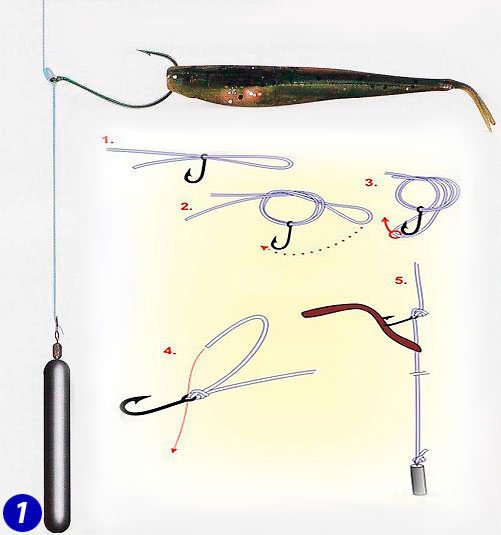
Equipment that allows you to fish in cluttered places in strong currents.
The bait is installed as follows:
- The main fishing line is equipped with a sinker , the mass of which depends on the strength of the current in a given section of the reservoir.
- At a distance of 20–30 cm from the sinker, an offset hook is installed on which the twister is threaded. This simple installation design allows you to make long casts, and the wiring, even in snags, is absolutely safe for the integrity of the gear.
Jig head
A very popular equipment for fishing with silicone baits. This tackle is a sinker into which a hook is soldered. The size of the sinker and the size of the hook vary widely. The size of the sinker primarily depends on the presence and strength of the current, and the size of the hook depends on the size of the rubber bait used.
Cheburashka
This method of mounting a twister is more universal , and, unlike a jig head, the tackle can easily be equipped with a hook of various sizes. For this purpose, 2 “ears” are installed on a lead sinker; an offset hook of the required size is mounted in one of the two “ears”, and a fishing line is tied to the other.
Carolina rig
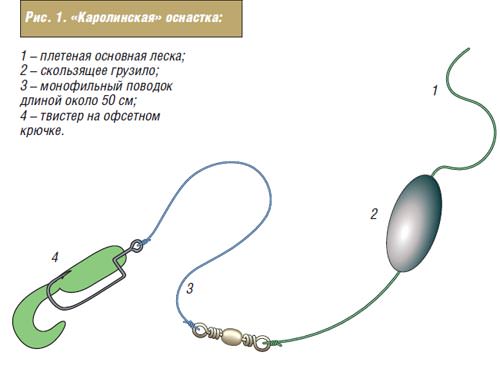
This method of installing silicone has been known for quite some time. The birthplace of the Carolina rig is America, where fishing with all kinds of rubber vibrotails is very popular.
This installation method is carried out in the following sequence:
- A bullet sinker is installed on the main line The sinker needs to be fixed to prevent it from moving along the fishing line.
- An offset hook is attached to the end of the fishing line , onto which a twister of a suitable size is installed.
With stepwise wiring of this design, the silicone bait produces very attractive movements. The probability of a bite is especially high during a pause, when, following the sinker, the bait sharply rushes down.
With the help of the Carolina rig, you can attract a predator if you move the rig at a very slow pace.
The turbidity that will be raised by dragging the lead sinker along the bottom will attract a predator, and the next silicone fish is unlikely to escape the fate of being eaten by a hungry perch.
Double hook mounting
This type of gear is used by many fishermen. A hook is inserted into the rubber at the bottom, so that both tips are outside the product. This significantly increases the number of successful casts, and the rubber remains undamaged for a much longer period of time.
https://www.youtube.com/watch?v=IxaFE-lSbQE
Fishing technique
In principle, you can fish with this tackle in any body of water where white fish are found and there is an acceptable depth. If an angler is just starting to master the garland, then it is best to go to well-known places where there is definitely a bite. You can ask other fishermen at what depth the fish begins to swallow the bait.
If this is not possible, then you will need to look for the layer where the fish are found on your own.
After the hole is made, the tackle is lowered to the depth; immediately by the play of the nod you can determine how deep the reservoir is. They immediately remove the excess line and begin to play with the bait . If, after about five lifts have been made, not a single bite has occurred, the fishing line is removed to the length of the tackle.
All movements should be smooth; sudden jerks should not be made. When you manage to find a fishing horizon, you will need to stick to this depth when fishing. After removing the first fish from the water, they look at what bait it pecked at.
Chekhoni on a garland in winter
It is worth considering that in winter the saber fish almost does not feed, but the garland allows you to fish almost the entire depth of the reservoir, which will ultimately lead to a positive result.
Common maggot or dung worm should be used as bait in winter. They are hung on a hook several at a time. If this bait does not work, you can try bloodworms or lard . It is not at all necessary to play with bait, since saberfish bite best on a stationary bait.
Roach, bream, silver bream on a garland
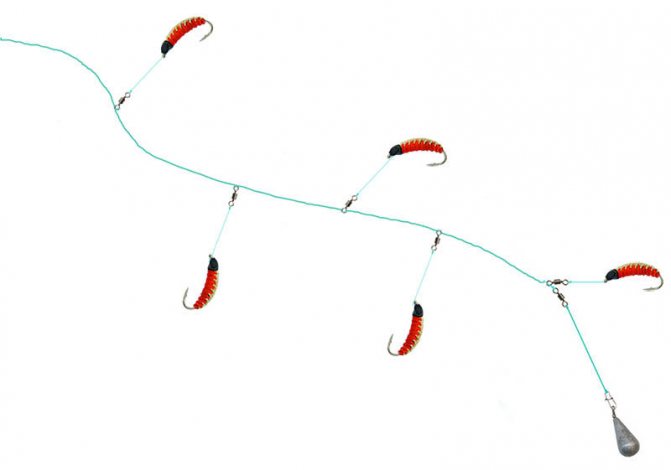
Often, these breeds are very actively taken on stationary tackle, but in order to arouse their interest and provoke a bite, you will have to tug the bait a little. They also pull quite smoothly, so as not to make sudden movements that could scare away the fish . In this case, the tackle is placed on the bottom so that the lower weight or jig touches it. Then the rod is carefully lifted up a maximum of a meter.
As a rule, during such movements a bite occurs.
Using a garland for catching bream, silver bream and other herbivorous fish does not require haste. If all movements are measured and smooth, then you will probably be able to leave the fishing trip with a significant catch.
Path for perch installation of live bait equipment
This fishing method resembles something between a spinner and a track, only live fish act as bait. It often happens that no artificial bait can make striped robbers react, but the fry can easily provoke them to attack.
Converting a spinning rod is not difficult. Perch has rather weak lips, and to avoid tearing them when hooking, a parabolic or semi-parabolic rod is appropriate. That is, to soften the jerk you will need a whip with a slow or medium action. It is possible to fish with a light spin both from a boat and from the shore, as we wrote about in the article “Catching perch on a spinning rod with a lead rig and Mepps spinners.”
The length of the fishing rod ranges from 180 to 240 cm with a test weight of up to 40 g. The equipment is primitive, like on mugs or girders. True, the method of planting live bait fish is somewhat unique. Since fishing is more active, the live bait hooked to the fin will begin to spin as it moves, which is very unnatural even for a wounded fish.
Perch fishing
It is the perch that most actively takes on the garland. The fact is that this fish moves throughout the entire thickness of the reservoir, so it can be caught without any problems. Perch is a predatory fish, which is why it actively moves in the water in search of prey.
Unlike bream fishing, it is very important to use the correct tackle here. If you leave it alone, then you can’t count on a bite, since a stationary bait is not of the slightest interest to the perch .
They play as follows: the bait is lowered to the very bottom, after which, with short and sharp jerks, it is raised to a height of about one and a half meters, it is held at this height for some time, after which it is returned to the bottom again. All these movements are repeated in a circle until a bite occurs.
In most cases, the perch will bite on the rise of the bait.
Twister for perch on a retractable leash
It is recommended to catch this cunning and nimble river predator using diverting leashes with attached twisters.
The process of installing leashes is quite simple:
- the end of the fishing line is secured with a sinker;
- at a short distance (10-15 cm), two loops are tied on the fishing line;
- a medium-length leash (up to 30 cm) is tied to each loop;
- Each leash is equipped with a hook and a twister.
You should not make leashes that are too long, as this will complicate control.
A similar equipment is used when pulling a load along the bottom; accordingly, the twister must be selected taking into account the possible turbidity of the water and great depth. When fishing in a reservoir with a noticeable current, the load on the line must be weighty enough so that it is not carried away by the flow.
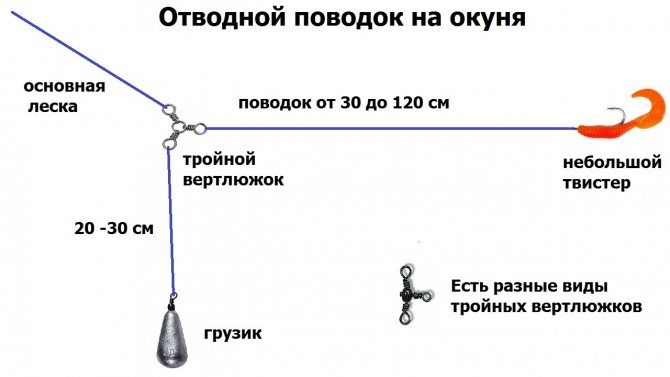
Installation of fishing gear on a retractable leash The principle of operation of the bait is that the mud raised by a load from the bottom attracts a perch, which, when approaching, notices the twister and attacks it.
This method is considered very successful; the catch is significant, since several fish can be caught at once.
Catching perch in summer with a garland
Summer fishing with a garland is best suited for beginner anglers. It is most convenient to do this from a boat, since this tackle is perfect for significant depths. Perch bites even more actively in the summer than in the winter months , so you don’t have to take a special approach to catching it.
In principle, bait for perch can be the same as in winter - this fish usually actively swallows any bait, starting with a worm and ending with various artificial baits that imitate the game of real fish.
Tackle for catching perch using a spinning rod: garland and split shot
Author Luka Strelnikov Reading time 5 min. .3k. Published 02/12/2018
Catching a large, large perch is not difficult if you follow certain rules. If they are followed, novice fishermen will increase their chances of a positive result. The small striped robber is easy to catch; there is plenty of it in any body of water. Today we will talk about fishing with a spinning rod - the simplest and at the same time method that requires a certain skill. This method has its own nuances, namely the correct equipment and well-chosen baits. This is exactly what we will talk about.
There are many ways to equip a spinning rod for different fishing methods: with a lead, Carolina, Texas, jig, microjig, spinners, spinners, wobblers, etc.
But there is a time when the bites of large fish are extremely sluggish, then you can switch to searching for small perch, along the coastal drop-off or along the edge of the grass, using the following equipment.
Read the article about choosing a spinning rod and fishing rod for perch.
Garland of silicone baits
Try the following equipment, which you will need:
- Line diameter 0.35
- Fluorocarbon 0.22
- Small twisters of different colors
- Single hooks
- Sinkers of 15-20 grams (if there is no current, use a smaller weight)
Let's start manufacturing.
First of all, we cut the fluorocarbon into 10 cm pieces, in the amount of 3-5 pieces. We retreat 15-20 cm from the end of the main line and tie the first leash. See the diagram for how to tie two different fishing lines. Tying with a “Grinner” type knot is shown in the photo below:
We repeat the procedure several times, retreating from the knots by 15-20 cm. We tie single hooks to the leashes, you can use a “clinch” knot. A little secret: in order to prevent the twisters from flying off at the first bite, choose those hook models that have notches on the shank. Some fishermen additionally lubricate the forend with super glue for reliability.
We equip all hooks with silicone; the method is no different from equipping an offset hook. A sinker of the selected weight is mounted at the end of the main line. For versatility, use a swivel that allows you to change the weight of the weight depending on the fishing location. A figure eight loop is knitted at the second end of the main line.
For clarity, watch a detailed video in which the angler shows all the stages of making his gear. Questions that may have appeared during reading should disappear.
The spinning equipment discussed in the article is described in order to give the reader new ideas and make it clear that experimentation and practice are a fisherman’s best friend.
Split shot is a good option
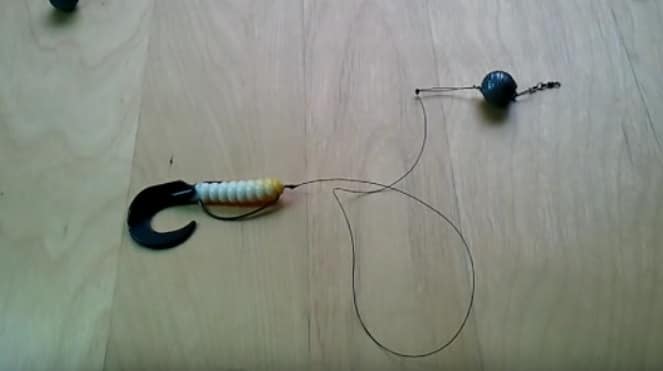
The following method has proven to be excellent when fishing with a microjig; it is called a split shot, reminiscent of a Carolina rig. The differences between them are that in a split shot the sinker is round in shape and rigidly fixed. In the Carolinas, bullet-shaped weights are more commonly used.
Let's get started. We cut the leash to the required length, there are no special recommendations. Its length can be 50-100 cm, the optimal option is selected by trial and error. An offset machine is tied to the segment using any knot, usually a clinch. A loop is made at the other end, threaded into the ear of the eared weight and secured.
Please note that a carabiner is attached to the second free eye of the load, connecting the tackle to the main braided fishing line. This makes it easy to replace it in case of small bites. The video below clearly shows the process of knitting a split.
Lures for catching perch with a spinning rod
With a good bite, the striped robber will attack almost any type of bait. We will try to highlight the best of them, so to speak. The fact is that there are probably no universal baits that work both day and night, in rain and sun.
You should choose them depending on the time of year, weather, depth, and current speed. Oscillating and rotating spoons are considered classics. We have already talked about the best and catchiest lures for perch, be sure to check out this list of budget models that will not leave you without a catch.
Wobblers that catch 100%:
When fishing at shallow depths or low (absent) current, use light spinners. Mepps remains the leader in the production of high-quality and catchable baits year after year.
The success of this company is easily explained: perch and pike, which inhabit almost every body of water in the country, bite perfectly on the same spoon. Their size is 00-2, take several types and weights at once. For depth and flow, larger counterparts No.: 2-4 are used. Rotators are perfect for beginners in fishing, as they do not require good fishing skills; it will be enough to rotate the reel evenly.
Balda for fishing striped robber - a thunderstorm for perches
One of the best baits are wobblers. It is worth remembering that in-ground models are best used during the period when the grass has not had time to grow (spring). In the summer, try different types; surface poppers (yo zuri 3ds is a favorite) using jerk wiring work well.
The main problem is that they are quite vulnerable when caught in snags or grass. It is very easy to hook a wobbler, as well as to lose it. Therefore, when fishing in overgrown and hard-to-reach places, use a non-snagging installation (for example, rubber).
Edible rubber: vibrating tails, twisters, worms. Perch responds well to them at all times of the year, the only difference will be in the size of the bait and the type of wiring. In the fall, feel free to use jig methods with a heavier weight. At this time, fish begin to live in pits and dumps.
In summer, equip your spinning rod with light twisters, small in length and weight. If the spinning test is small (light or ultralight), then fishing for perch is extremely interesting and exciting, regardless of the size of the catch. The whitebait fishing method is relevant at different times of the day, so be sure to try it out!
Catching bleak
In winter, bleak prefers to walk in the upper or middle layers of the reservoir, so it will be much easier to deal with it than with bream or perch, which prefer to stand in the bottom area. In this case, bloodworms or maggots are suitable as bait.
When hunting for bleak, you should remember that it also does not tolerate too strong and sudden movements, and its bite is very sharp and accurate, and therefore it will not be possible to adapt to such a bite right away.
Adviсe
- You should master the technique of fishing with garlands in both the summer and winter months only on familiar bodies of water. They should have fairly deep areas. If for a certain time you cannot find the location of a school of fish, then you can use a certain trick: watch how another fisherman is fishing, and try to determine the approximate depth where the fish stands today by waving his hands;
- The heaviest jig is tied to the very beginning , and then lighter and lighter attachments are installed. Using this method, it is much easier to determine the depth of the reservoir, make the game easier and prevent the gear from getting tangled;
- It is not advisable to tie the nozzles too close to each other , as they will often get tangled, and it will take quite a lot of time to untangle them.
